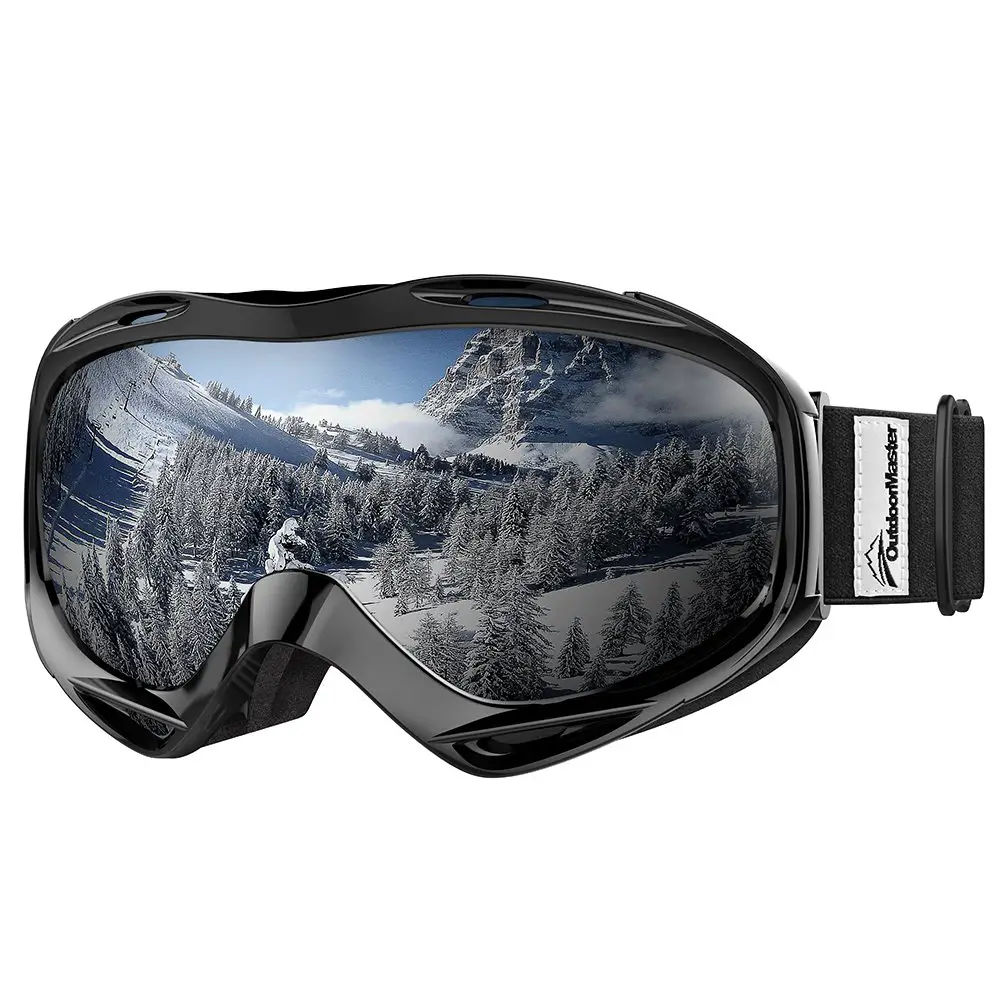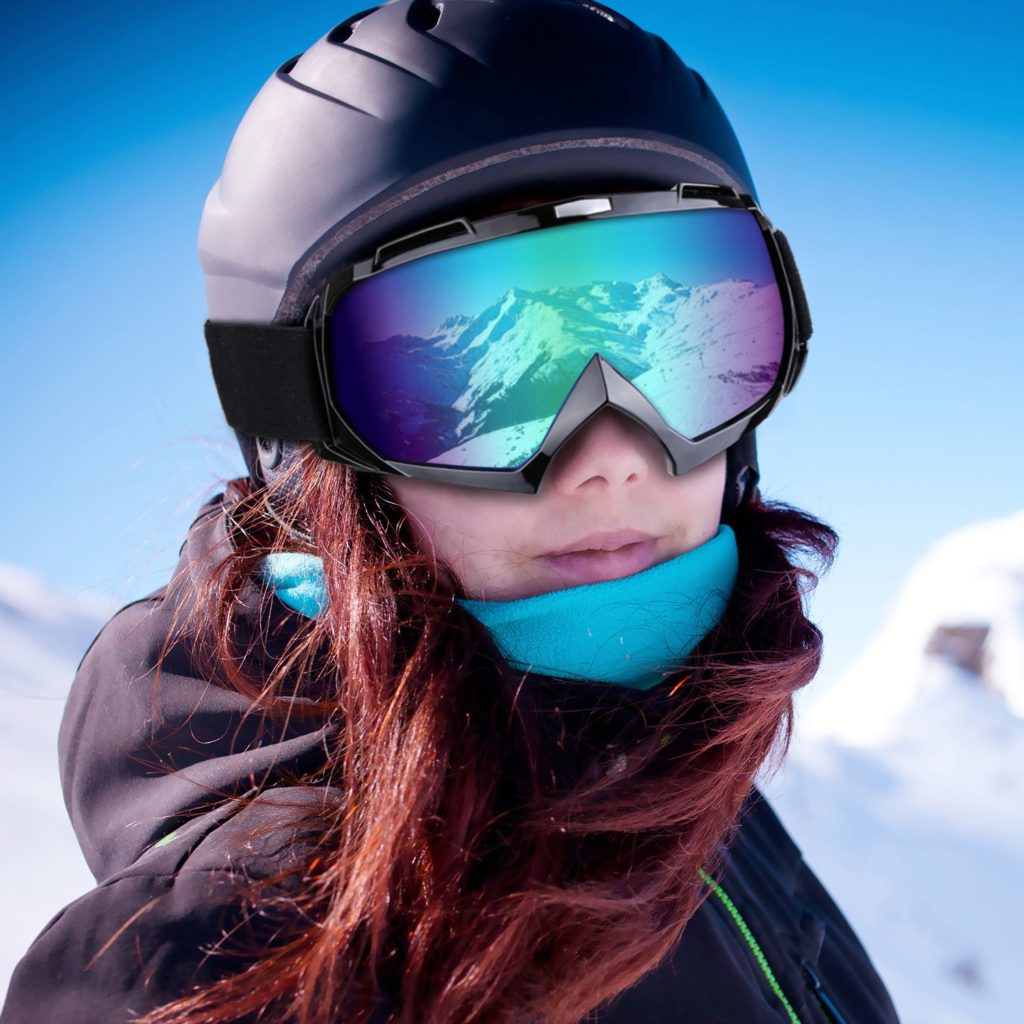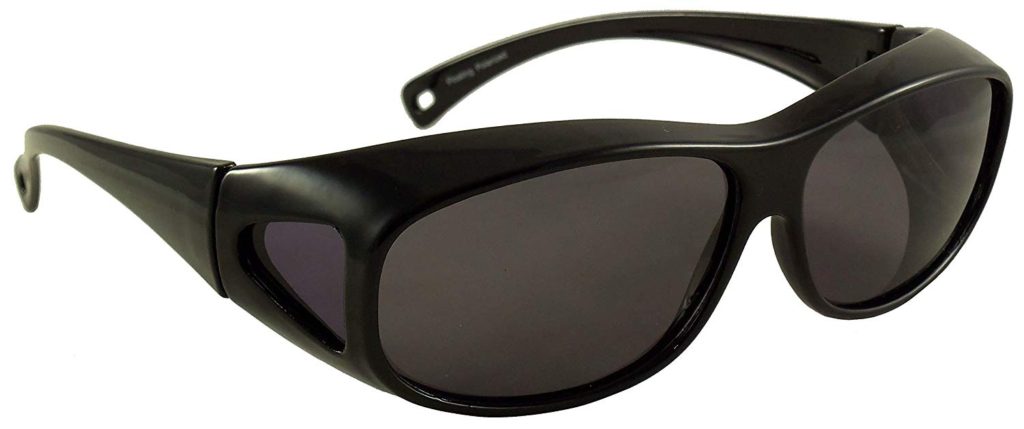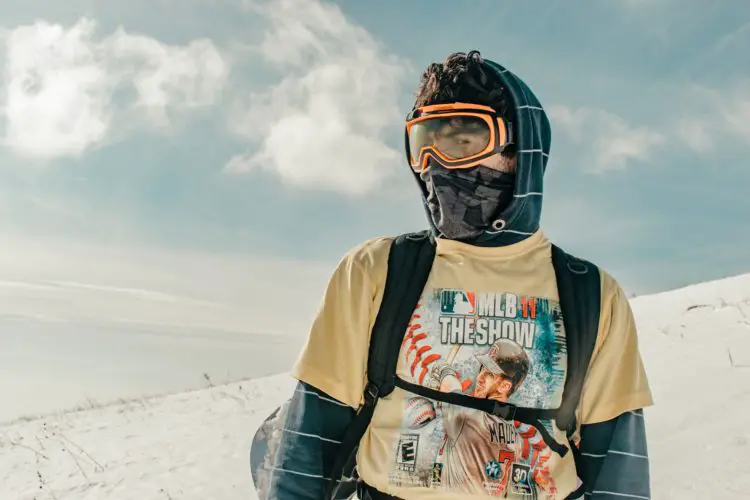I remember all too well the first time my best friend dragged me to the climbing wall. I’d been an unwilling participant but I’d made a promise I’d give it a try. And I remember how hard he’d laughed when I asked him if I could wear my glasses.
Perhaps it was a stalling technique on my part, trying to delay the inevitable. I think I really knew the answer and was just hoping he’d tell me no, I’d have to go home or fumble around without them. But after my first taste of climbing, nothing could stop me from getting up there.
But that’s the climbing wall. What about when you’re out there on the rock?
The answer is still yes. Wear your glasses, but you know it’s going to come with a ‘BUT.’
If you wear prescription glasses, you’ll want to read on to find out how to go rock climbing while wearing glasses. These tips will also be handy for those of you who can’t stand to go anywhere without sunglasses on either. Surely, you don’t want to lose or damage your eyewear, so let me run some beta on you about that.
Bring your glasses with you and tighten your eyeglass frame when climbing
It’s a long way down, and while you’re safely tethered to the ropes and guarded by your belayer, your glasses aren’t. Some climbers never do anything special to prevent their glasses from slipping off and falling down to the world below. I’d just say those folks are lucky.
If you’ve ever lost or damaged a pair of prescription glasses doing something ordinary, just imagine doing it while out on the extraordinary, during climbing. I’m going to go out on a limb here and assume that you, like me, need your glasses to see day-to-day. That being said, I’d advise you to tighten your glasses. You can bend the ends a little so it stays put on your face when you look down. This is an ideal solution for those of you that aren’t big into climbing yet or anyone going on a one-off climb during a vacation.
If you plan on making this a regular thing in your life, you’ll likely want to keep reading to find out more about goggles and how they can make your climb amazing.
Buy a neck cord or holder strap for your glasses when climbing
Another option that I used myself for a while was to attach a neck cord to my glasses. This gave me extra insurance to keep my glasses from plummeting off my face when I needed them the most. Neck cords are super-cheap and come in a variety of styles, these are my favorites on Amaon. You can find them just about anywhere and for that low price, you get complete peace of mind, knowing that even if your glasses slip off your face, they’ll stay around your neck.
At the climbing wall, I once saw a guy drop his glasses from the top. Needless to say, the glasses didn’t survive. About 10 minutes later, we all witnessed a very animated conversation he was apparently having with his girlfriend, begging her to drive over there and bring him his spare pair. Entertaining for us, not so much for him. If only he’d used a neck cord.
Wear contact lenses instead of glasses when climbing
Another option is contact lenses. I personally hate them. I just can’t get past sticking them in my eye. I know I’m the minority here, but if you can wear them happily, I’d advise it. You don’t have to worry about your vision and it’s easy to wear other eye gear over them like goggles or glacier glasses, or anything else.
There is a downside that my contact-wearing friends mention though and that’s the comfort level. While in ordinary conditions, like say at your desk at work for example, contacts are great, but with loads of sun, wind, dirt, and even precipitation, they might get uncomfortable quick. One of them swears by those daily contacts though, citing that they’re much more breathable even in the face of weather extremities.
That friend, Dave, has brought back-up daily-wear contacts with us on multi-pitch climbs where we’ve camped out. It’s a lot easier for him this way because he doesn’t have to try to clean his lenses. His best advice to other contact-wearers is to wait a minute before putting in or taking out your contact lenses after you use hand sanitizer. He also told me that in cold weather, contact solution can freeze. It’s why he always keeps it in his sleeping bag with him at night so it stays warm.
Go for over-the-glasses options
As I mentioned in another post, I’m not a fan of contacts. I have tried and tried to use them but I just can’t handle it. I hate my glasses, but to me, they’re much more comfortable. If you’re in my boat, then you probably wonder what else you can do short of forgoing them and fumbling around or suffering with contact lenses.
When you’re climbing, you need to be comfortable. And if you’re more comfortable in glasses, then that’s how you should climb. I mentioned fixing your frames and even better, using those neck cords to keep your glasses from falling off and breaking. But if you’re serious about climbing, you should eventually invest in over-the-glasses goggles for your climbs.
This is what I’ve been using for a while now. Once I got more into climbing, I wanted something that would protect me from debris and help with the sunlight. Those just dabbling might find they’re fine without it, but if you spend enough time up on the rock, you will most certainly want a pair because even with a neck cord, glasses can’t protect you from debris, plus you need protection for your glasses too.
I’d like to recommend some of my favorite options for you and tell you about them so you can get a pair of over-the-glasses goggles for your next climbing excursion.

– OutdoorMaster OTG Ski Goggles
If you like skiing too, these babies will pull double-duty for you, and that’s never a bad thing. Ideal for snowy terrain, the OTG has dual-layer lens technology in its corner plus it has an anti-fog coating so you can see clearly no matter what’s going on. The elastic strap works with all helmets so you have safety, convenience, and clarity all in one great pair of goggles that you can use for other outdoor sports.

– CarBoss Outdoor Safety Goggles
Another great option for prescription glasses wearers is the CarBoss. Ideal for any outdoor sport as well a climbing, you can comfortably wear them over your glasses. It features anti-fog and anti-UV features, plus they’re scratch resistant. What I really like about these is that the lens curvature is in tune with the shape of your eyes, even with the glasses on so you get a better view all around.

– Ideal Eyewear Polarized Floating Fit Over Sunglasses
Love wearing sunglasses? This polarized pair can be worn over small or medium-sized prescription goggles. These are perfect if you’ve shelled out the cash for a prescription pair of goggles so you can reduce the glare of the sun, especially from the snow. It blocks the UV rays and makes seeing much easier when on the rock. And if you also love water sports, these can work just as well. They are designed to float should you accidentally drop them in water.

– JULI Eyewear Over Glasses Ski Goggles
Another pair of ski goggles, you can wear these over your prescription glasses for climbing too, whether it’s a hot and sunny day or you’re mountain climbing. They’re good for other outdoor sports too, even driving an ATV. These give a nice smooth air flow inside the lens while keeping fogging down.
All of these are great choices, though I’d like to tell you about prescription goggles and glacier glasses. If you’re adopting climbing into your life as more than something you’d do a handful of times a year, you should definitely consider the investment. Read on to find out more!

Use prescription glacier glasses and prescription goggles
See, the trouble with contact lenses in the wild, where it’s cold or snowy, or both, is that they’re hard to use. Even if you use the daily ones like Dave, the weather makes it tough. If you have a standard prescription, you can use prescription glacier glasses. They come in many styles, though there are more specialized and non-standard versions. I like the Sherpa Spectron 3 for those, but whatever brand you go with, you should choose dark lenses.
If you have sensitive eyes, I recommend going with about a 5% visible light transmission (VLT). If your eyes are less sensitive, you can use the transition-style lenses. Go for VLT of 5 to 20%, whatever feels most comfortable for your needs.
Prescription glacier glasses are great, but in tandem, you’ll want prescription goggles. These are great for non-icy conditions because you won’t have to wear your glasses underneath them. As you’ve likely guessed, it’s not cheap but it’s very worth the investment if climbing is going to be a steady part of your life. There’s less bulk and that translates to more comfort plus the visibility you need. A win-win! Choose low- to middle VLT lenses at 10 to 30%, depending on your sensitivity and the locations you’ll mostly be climbing.
Use glasses with UV protection when climbing to avoid snow blindness
Lastly, I’d like you to be aware that you need UV protection because the sun on the snow can leave you snow blind. A temporary yet painful condition, medically known as photokeratitis, it’s when the sun burns your corneas, something you’re at risk for if you’re not wearing sunglasses while in high altitudes.
An ideal solution to this is to use the kind of sunglasses that fit over top. These stop the sun’s rays from creeping in where they can do damage. Even if you pull your goggles for a moment downward to get the fog to escape from your warm breathe on those high altitudes, you run a great risk of suddenly blinding yourself and seeing nothing. And that’s not something you want to happen way up there.
Don’t skip out on them on cloudy days either. The rays can be just as dangerous then. You might not feel it in action, but you can bet you’ll feel it the next morning. Consult your doctor if you feel any discomfort. It’s so much better to be safe than sorry. Even if you have all the right eye wear, one prone moment could leave you or one of your fellow climbers at risk.
Bottom Line
In short, you should make sure to protect your glasses while wearing them on climbs. It’s not just about having them fall off but also that they could get scratched and damaged. Protecting them while keeping your sight in pristine condition is one of the most important things to think about.
For those that don’t climb on the rock all that often, investing in prescription goggles might be too much. But if you’re going every weekend, or even every other weekend on climbing excursions, do yourself a favor and get the right eye gear. You’ll be so glad you did. You’ll have less bulk, clearer vision, and stay protected from the elements.
Adding sunglasses to the mix is important too, particularly in high altitudes. There are so many options though now for keeping your eyes protected from the sun and incorporating prescriptions. There are also many goggles that can fit easily over your prescription glasses, an ideal solution if you’ve already paid a pretty penny for, say, polarized prescription sunglasses that you wear everyday wherever you are.
Whatever your climbing habits, analyze them and make sure you’re doing the best for your eyesight too. Without a keen eye, climbing is much less enjoyable, not to mention more dangerous.

